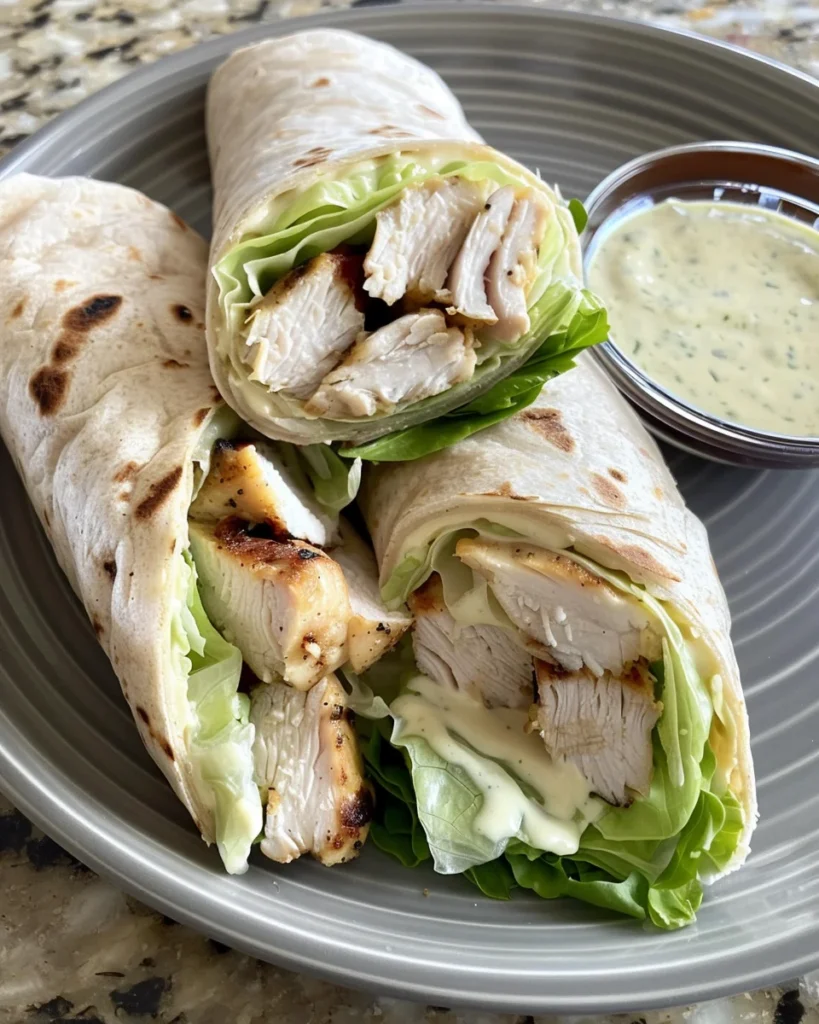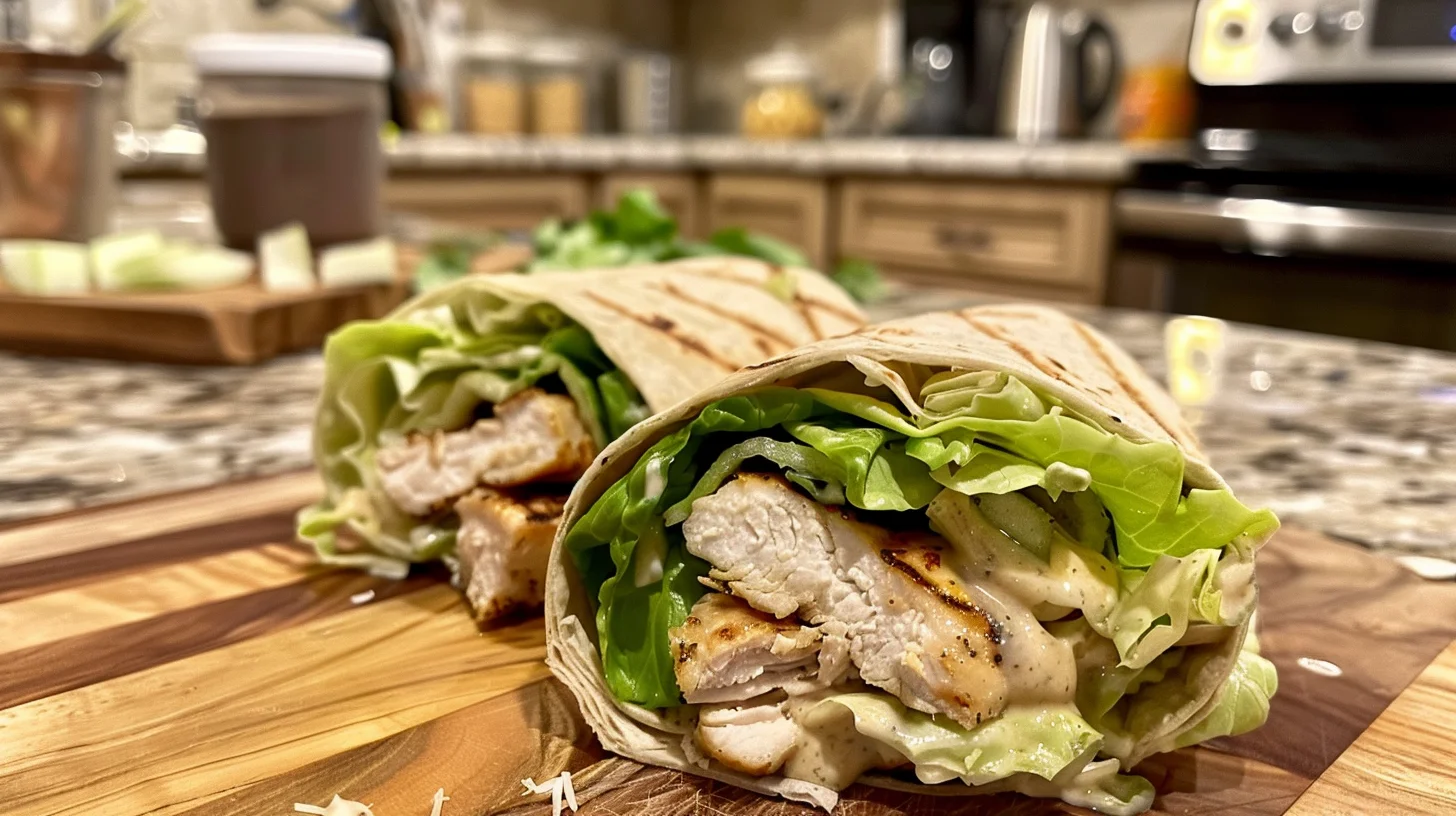There’s something deeply satisfying about the crunch of a fresh chicken Caesar wrap—the creaminess of the dressing mingling with juicy grilled chicken, crisp lettuce, and the soft pull of a tortilla. Growing up, I watched my Italian-American grandmother put her own twist on classic American dishes. And while Caesar dressing wasn’t something you’d find on her Tuscan table, she knew how to craft bold, tangy, homemade sauces that made every bite unforgettable. That’s the spirit we’re channeling today.
Whether you’re prepping lunch for a sunny summer picnic or looking for a cozy winter wrap alternative to a heavy meal, this homemade Caesar dressing is your go-to. It’s quick to whip up, packed with flavor, and free of the preservatives you’ll find in store-bought bottles.
Why Make Homemade Caesar Dressing for Chicken Wraps?
Before we dive into the whisking and blending, let’s answer the delicious question: Why bother making Caesar dressing from scratch when bottles are right there on the shelf?
It’s a fair question—and the answer is a flavorful one.
1. Freshness and Flavor You Can Taste
When you whip up your own Caesar dressing, you’re unlocking a depth of flavor that simply doesn’t exist in mass-produced bottles. Fresh garlic delivers a bite that wakes up the palate. Real lemon juice gives that bright tang, perfectly balancing the umami richness of Parmesan and anchovies. And then there’s the olive oil—smooth, peppery, and grounding everything together in a velvety emulsion.
Store-bought dressings are often dulled down with preservatives, shelf-stabilizers, and artificial flavors. Homemade? It’s alive with intensity and vibrancy.
Plus, if you’re using this for a wrap, a freshly made Caesar dressing coats the chicken and lettuce beautifully—clinging instead of sliding off, flavoring every bite.
2. Tailored to Your Taste Buds
Hate the fishy zing of anchovies? Cut them. Want it creamier? Add a dollop of Greek yogurt or an extra spoon of mayo. Craving a garlicky punch that lingers on your tongue? Throw in another clove. That’s the beauty of making it yourself: you’re the chef.
With just a handful of pantry ingredients, you can create a sauce that matches your preferences exactly. Want to impress dinner guests or meal prep something that tastes gourmet? Personalize it with your signature twist. Maybe smoked paprika? A hint of honey? A sprinkle of roasted sesame seeds? The possibilities are endless.
3. Cleaner Ingredients, Lower Cost
Let’s talk cost—and health.
A good bottle of Caesar dressing can run you anywhere from $5 to $8, and often, it’s packed with added sugars, cheap oils, artificial thickeners, and unpronounceable preservatives. When you make it at home, not only do you save money in the long run (especially if you make it often), but you also skip the junk.
You know what’s in your dressing—real lemon juice, freshly grated cheese, quality olive oil, and simple, honest spices. It’s a great way to eat “clean” without sacrificing flavor. Plus, you can make just the amount you need, reducing food waste and making sure every drop is fresh.
4. A Culinary Confidence Boost
There’s a small, satisfying pride in mastering sauces. They’re the unsung heroes of great cooking—tying dishes together and elevating humble ingredients into something extraordinary. Once you’ve nailed Caesar dressing, it opens the door to mastering others too: ranch, vinaigrettes, aioli, and beyond.
Making your own dressing also makes you more mindful of flavors. You’ll start to recognize the balance of acidity, fat, salt, and umami—and soon, you won’t just be following recipes, you’ll be creating your own. It all starts with understanding the essentials. If you’re curious about what makes a Caesar wrap tick, take a moment to explore what a Chicken Caesar Wrap is made of — each ingredient plays a role in creating that crave-worthy harmony.
Ingredients: What You’ll Need
Here’s your base Caesar dressing recipe—perfect for coating grilled chicken and greens inside your wrap.
Classic Caesar Dressing Ingredients:
- 2 cloves garlic, minced
- 2 anchovy fillets (optional but traditional!)
- 1 tsp Dijon mustard
- 2 tsp Worcestershire sauce
- Juice of 1 lemon (about 2 tbsp)
- 1 egg yolk (or 2 tbsp mayonnaise for a safer, no-raw-egg version)
- ½ cup grated Parmesan cheese
- ½ cup olive oil (extra virgin for best flavor)
- Salt and black pepper to taste
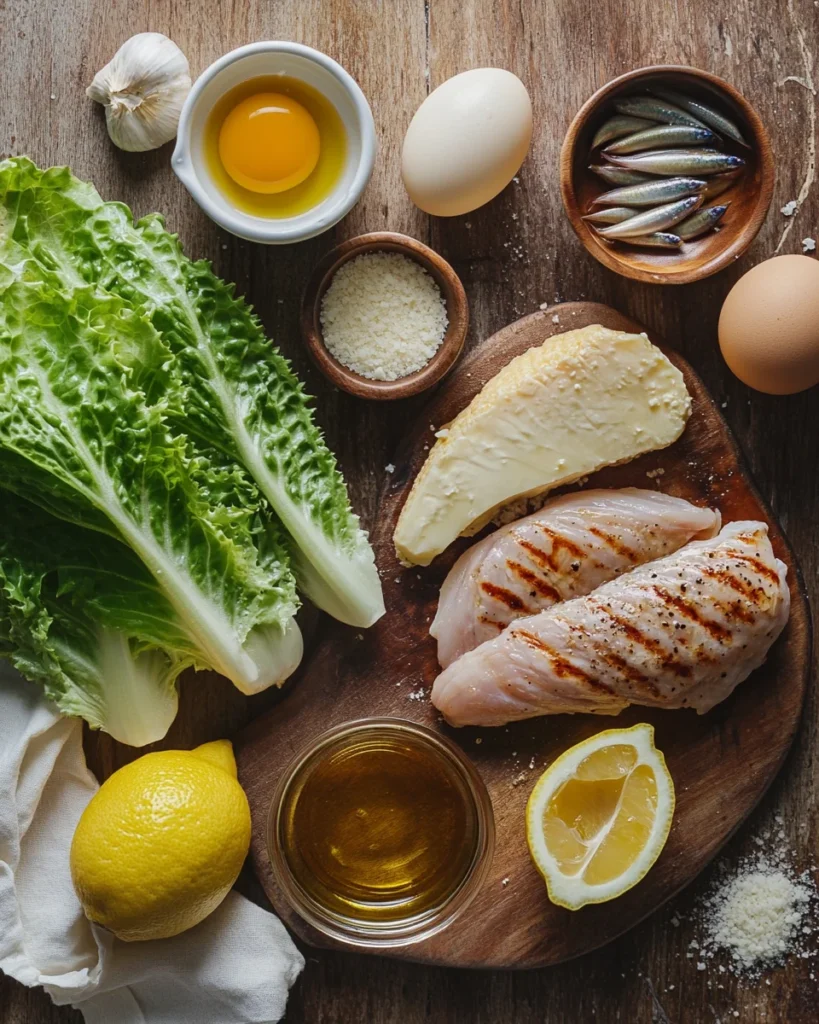
Optional Add-Ins for Caesar Wrap Dressing:
- 1 tbsp Greek yogurt or sour cream
Adds extra creaminess and a smooth, rich texture. - A pinch of chili flakes
Brings a subtle heat for a spicy twist. - 1 tsp apple cider vinegar
Enhances the tanginess with a fruity, mild acidity. - ½ tsp honey or maple syrup (optional)
Balances sharp flavors with a hint of sweetness.
These simple add-ins let you personalize your Caesar dressing to fit your flavor preferences perfectly.
Tools You’ll Need
- Small mixing bowl or blender
- Whisk or spoon
- Grater for fresh Parmesan
- Garlic press (optional but helpful)
Step-by-Step: How to Make Caesar Dressing for Chicken Wraps
Step 1: Mash the Garlic & Anchovies
Start by finely mincing two garlic cloves and two anchovy fillets. These small but mighty ingredients deliver that signature Caesar depth. Use a fork, chef’s knife, or mortar and pestle to mash them together until they become a smooth, aromatic paste. This base creates the umami backbone that brings Caesar dressing to life. If anchovies aren’t your thing, you can omit them—but just one or two give a delicious savory boost without tasting “fishy.”
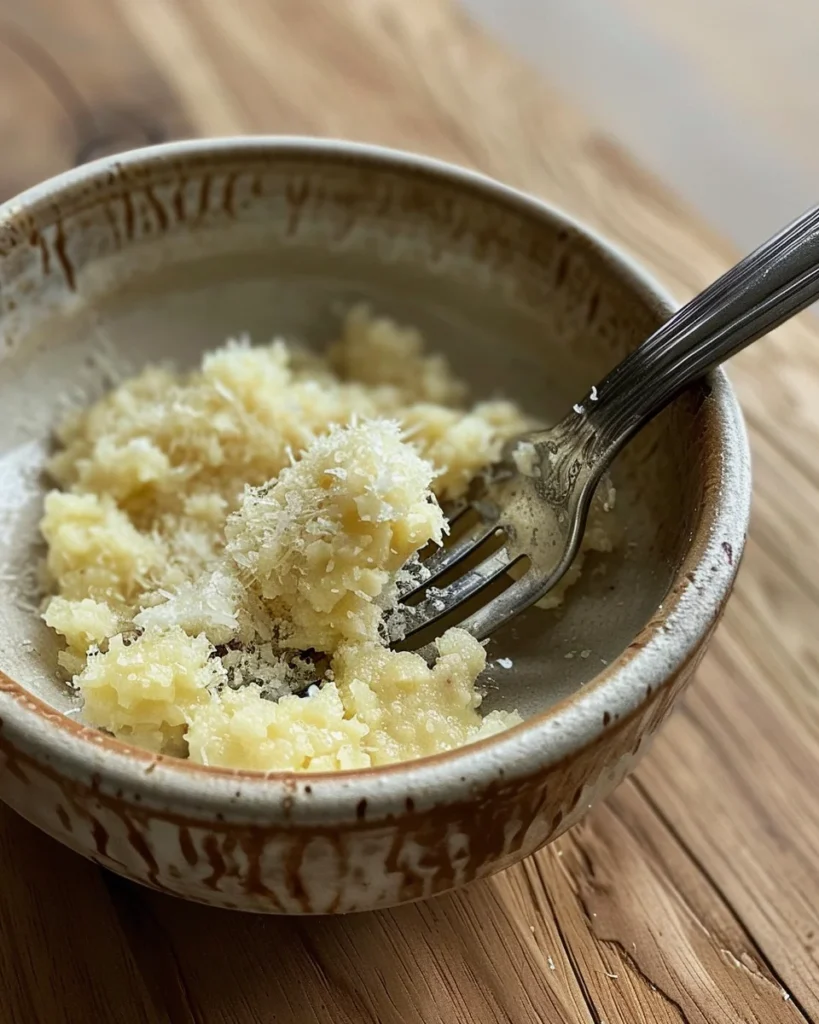
Step 2: Whisk in the Flavor Base
Transfer the paste into a mixing bowl. Add 1 teaspoon of Dijon mustard, 2 teaspoons of Worcestershire sauce, and the juice of one freshly squeezed lemon. These bold, acidic ingredients enhance the garlic-anchovy paste and start building layers of flavor. Whisk well until the mixture is smooth and slightly thickened. This step creates the bold, zesty core of the dressing—bright, tangy, and full of personality.
Step 3: Add the Creamy Element
Next, whisk in one fresh egg yolk, which acts as a natural emulsifier and adds richness. If raw egg isn’t your style, replace it with 2 tablespoons of quality mayonnaise or Greek yogurt. Both alternatives offer creaminess and stability. This is the moment where your dressing starts transforming into that creamy, dreamy texture Caesar is known for.
Step 4: Emulsify with Olive Oil
Now comes the magic: the emulsification. Slowly drizzle in ½ cup of extra virgin olive oil while whisking constantly. Don’t rush this step—add the oil in a slow, steady stream to ensure the mixture thickens beautifully. You’ll see the dressing become glossy and smooth, almost like a thick vinaigrette. This silky texture is key for coating chicken and greens evenly without overpowering them.
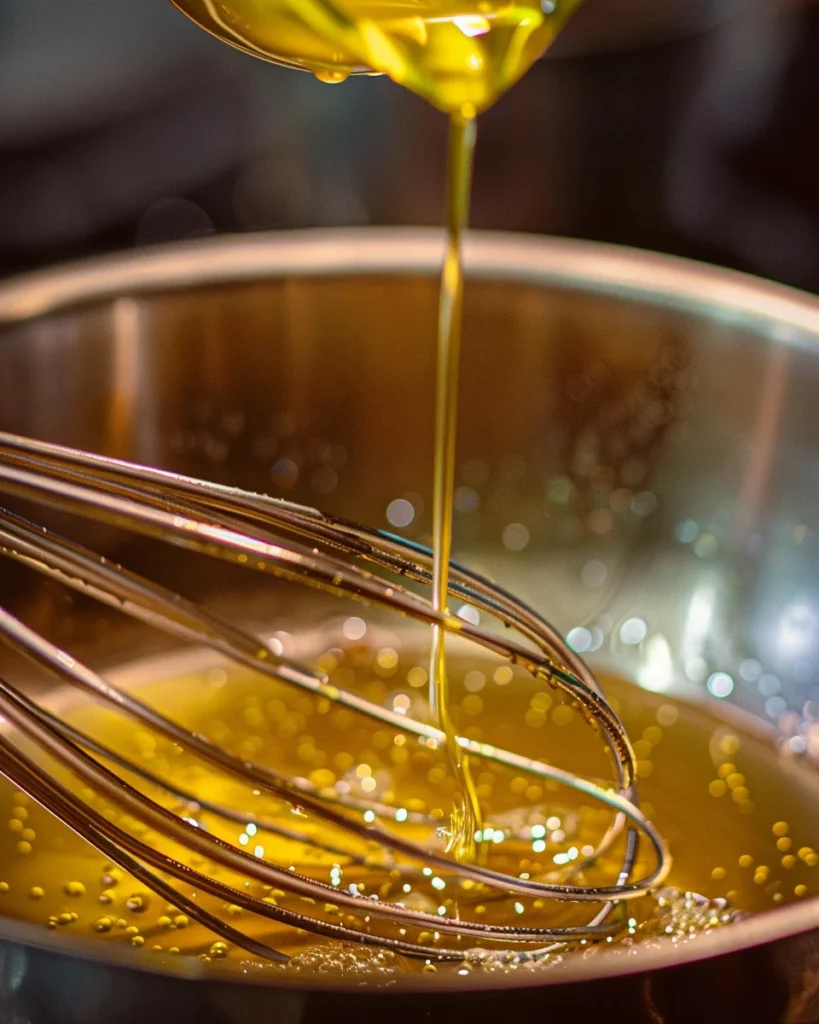
Step 5: Stir in Parmesan and Season
Once emulsified, fold in ½ cup of finely grated Parmesan cheese. The cheese deepens the flavor and gives the dressing its signature salty, umami-rich punch. Season the dressing with freshly ground black pepper and a pinch of sea salt—taste as you go, adjusting the seasoning to suit your palate. A splash more lemon juice can brighten things up, while a little extra Parmesan thickens it even more.
Chef’s Tip: Let the dressing sit for 5–10 minutes before using. This short rest helps the flavors meld and intensifies the overall taste. For an ultra-smooth finish, blend the entire dressing using an immersion blender or food processor.
Making It Safe: Raw Egg Alternatives
If you’re avoiding raw eggs, simply substitute the egg yolk with:
- 2 tablespoons of mayonnaise
- 1 tablespoon of Greek yogurt These maintain the creamy texture and ensure food safety, especially in summer.
Tips for the Perfect Chicken Caesar Wrap
- Use grilled chicken: Sliced grilled chicken breast or thigh gives a smoky flavor that pairs beautifully with the dressing.
- Crisp your lettuce: Romaine works best—keep it cold and crunchy.
- Don’t overfill: A light touch makes for a better bite and easier wrapping.
- Warm the wrap slightly: A warm tortilla is more pliable and flavorful.
Storage & Shelf Life
Store your Caesar dressing in an airtight container in the fridge for up to 4 days. Because it contains fresh ingredients, use it quickly for the best flavor.
Serving Ideas Beyond Wraps
Caesar dressing is endlessly versatile. Try it:
- As a dip for roasted veggies or fries
- Drizzled over grilled shrimp tacos
- As a dressing for pasta salad or grilled corn
- Tossed with kale for a nutrient-rich twist
Frequently Asked Questions
What is Caesar dressing sauce made of?
Caesar dressing is a rich, creamy, and savory sauce traditionally made from a combination of finely minced garlic, anchovy fillets, Dijon mustard, Worcestershire sauce, fresh lemon juice, egg yolk, grated Parmesan cheese, and olive oil. The anchovies and Worcestershire sauce give it a deep umami flavor, while the lemon and mustard add tangy brightness. The egg yolk (or mayonnaise in some modern versions) acts as an emulsifier, binding everything into a silky, luscious dressing. It’s a beautifully balanced blend—salty, tangy, creamy, and just a little bit spicy from the garlic.
What is a chicken Caesar wrap made of?
A chicken Caesar wrap offers a tasty, convenient twist on the classic Caesar salad. It usually features juicy grilled chicken breast, crisp romaine lettuce, rich Caesar dressing, and a sprinkle of shaved or grated Parmesan cheese—all tucked into a soft flour tortilla. To boost flavor and texture, some versions add crunchy croutons, sliced cherry tomatoes, or even roasted chickpeas.
Great for lunch, a light dinner, or meal prep, it strikes a perfect balance between protein and freshness. And the best part? It’s easy to customize—try whole grain wraps for a lighter take or pile on your favorite extras for something heartier. To make it truly irresistible, don’t overlook the chicken — here’s a guide on what to season your chicken with for a Caesar wrap that elevates the flavor in every bite.
How to make chicken Caesar dressing?
To make homemade Caesar dressing for chicken wraps or salads, start by creating a paste with garlic and anchovy fillets—this is your umami-rich foundation. Whisk it with Dijon mustard, Worcestershire sauce, and freshly squeezed lemon juice to build a tangy, savory base. Then, add one egg yolk or a couple of tablespoons of mayonnaise to give the dressing its signature creamy body. Slowly drizzle in extra virgin olive oil while whisking to emulsify it into a smooth consistency. Fold in finely grated Parmesan cheese, season with salt and pepper, and let the dressing rest for 10 minutes so the flavors meld. It’s bold, creamy, and absolutely perfect with chicken.
What ingredients are in a chicken Caesar salad?
A traditional chicken Caesar salad features a simple yet flavorful mix of ingredients:
- Grilled chicken: usually sliced breast, seasoned and cooked until juicy.
- Romaine lettuce: the crunchy, slightly bitter leaves are the perfect backdrop.
- Caesar dressing: creamy, tangy, and packed with garlic and Parmesan.
- Parmesan cheese: shaved or grated, it adds a salty richness.
- Croutons: for texture and crunch, often tossed in olive oil and herbs.
- Black pepper: freshly cracked for a hint of heat.
Optional extras can include sliced avocado, hard-boiled eggs, roasted chickpeas, or cherry tomatoes for added texture and flavor. The heart of a chicken Caesar wrap, however, lies in its balance—crisp greens, creamy dressing, and flavorful protein coming together in every bite.
Let’s Wrap It Up!
Whether you’re prepping lunches for the week, planning a picnic, or just need something quick between meetings, a Chicken Caesar Wrap delivers every time. It’s satisfying, portable, and packed with balanced flavor. But what truly sets this wrap apart is the Caesar dressing—creamy, garlicky, tangy, and homemade with love.
That dressing isn’t just a condiment—it’s the heart of the wrap. It transforms simple ingredients like grilled chicken, crisp romaine, and a soft tortilla into something crave-worthy. And the best part? It takes just minutes to make and stores beautifully for several days. But beyond the flavor, you might be wondering if it’s good for you. The truth is, a Chicken Caesar Wrap can be a healthy option with a few mindful choices in ingredients and preparation.
